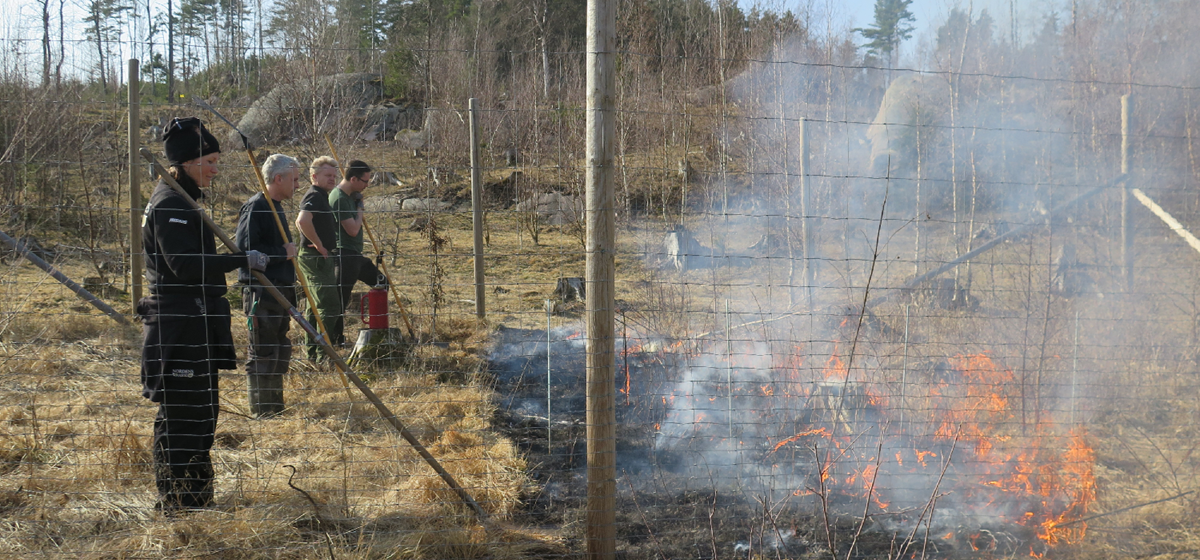Fire and herbivory
Fire and herbivory – key drivers of temperate open ecosystems (2015-2023)
Between 2015-2023, a unique research project took place in the Ecopark. We investigated how young saplings and vascular plants were affected by grazing and fire – two important natural disturbances. The purpose was to determine which methods that can be used in our nature conservation work in order to maintain an open landscape.
Many scientists believe that before man started working the land, it was the large herbivores and naturally occurring fires that shaped the landscape. When agriculture later took over, the process was continued in the form of grazing cattle, mowing and so-called slash-burning. But today, the number of grazing cattle has fallen sharply and every effort is made to avoid fires. The result is that once-open landscapes rapidly become overgrown, something that is not conducive to diversity that requires a lot of light and continuous grazing.
In this projectwe wanted to study how different trees and shrubs, and also vascular plants, reacted to different kinds of disturbances. A disturbance is something that changes the environment in some way. It can be a prolonged drought, a flood or, as in our case, fires and grazing by large herbivores. You might think that such factors destroy nature, but it isn’t that simple. Nature needs to change if as many different species as possible are to thrive.
We had a set-up of 24 test sites in the Ecopark where we planted various trees and bushes, as well as different types of vascular plants. The test areas were grazed by our own cattle and were also subject to burning in different sequences. Several times a year, an inventory was carried out to see how the treatment affected trees, shrubs and vascular plants.
This research is unique. It’s the first time anyone has studied the effect of both grazing and fire in this fashion at our latitudes. Similar studies have been conducted in Africa and also in Bialowieza, Poland, one of the last ancient woodlands in Europe. But those studies focused mainly on the impact of grazing by wild animals. Since we used domestic grazing animals, we couldcarry out a more controlled study. The hope is now that the results will give us a better understanding of how we can preserve our species-rich landscape where flora, butterflies and other creatures thrive.
For further information about the project, contact:
Karin Amsten, Nordens Ark [email protected]
Mats Niklasson, Nordens Ark [email protected]
Publications
The results are published in a doctoral thesis, which can be found here (https://publications.slu.se/?file=publ/show&id=122528).
The study was supported by the Hasselblad Foundation and Thuréus forskarhem, and Svenska Skogsplantor AB donated some of the seedlings for the research.
The project involved researchers from the Swedish University of Agricultural Sciences (SLU), the Mammal Research Institute in Bialowieza, Poland, and University West in Trollhättan.






